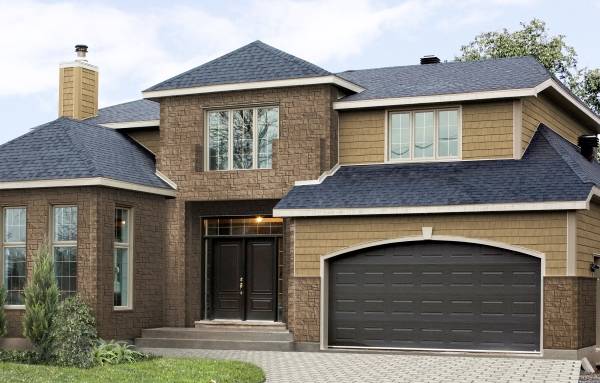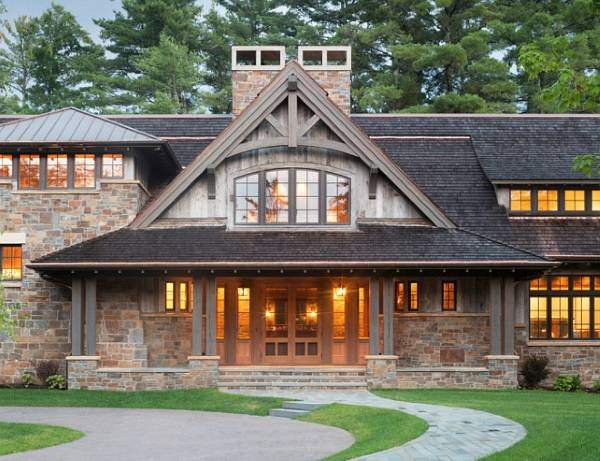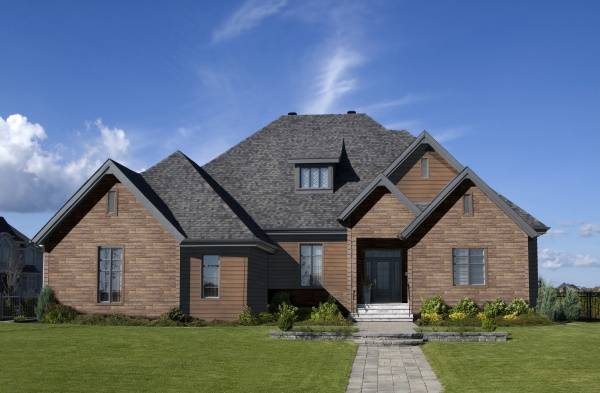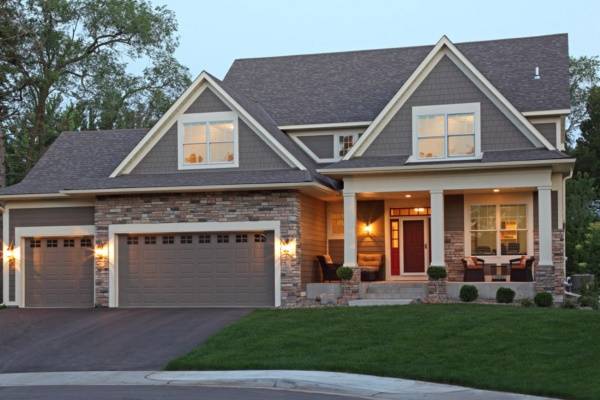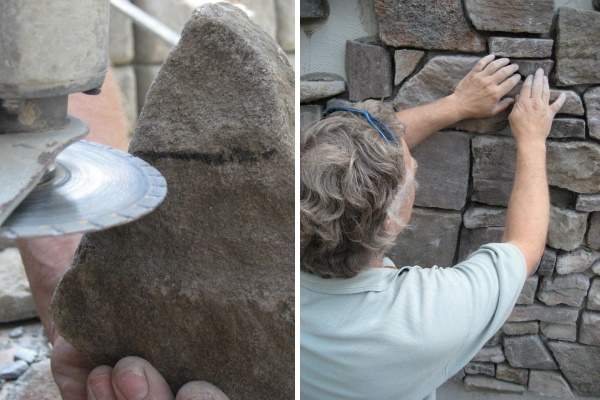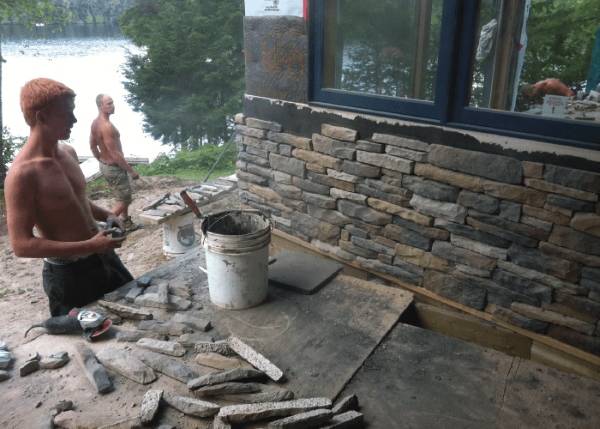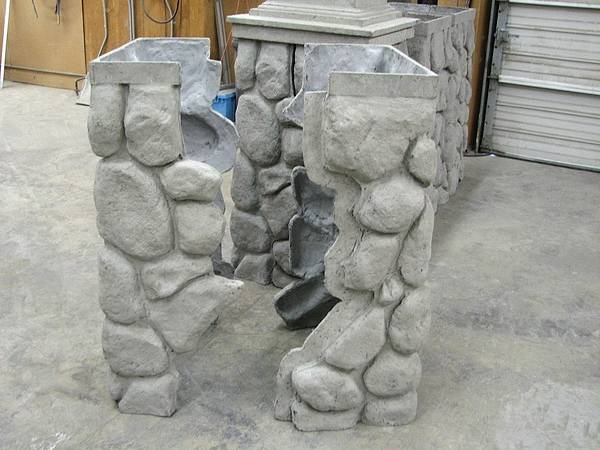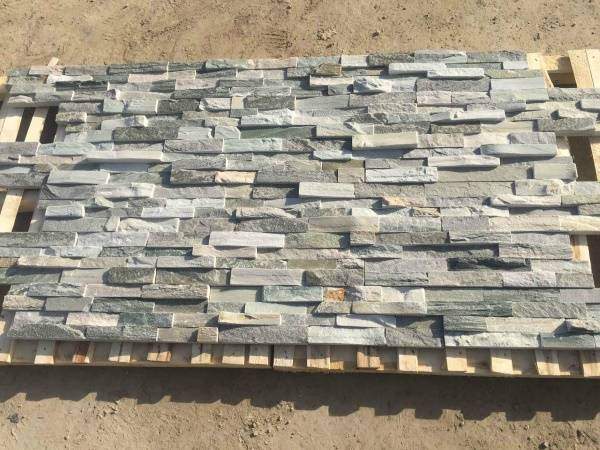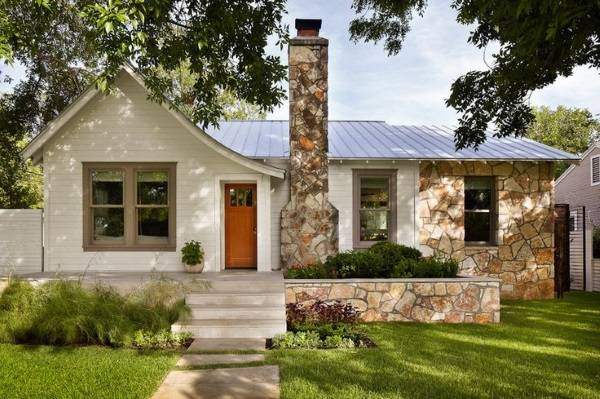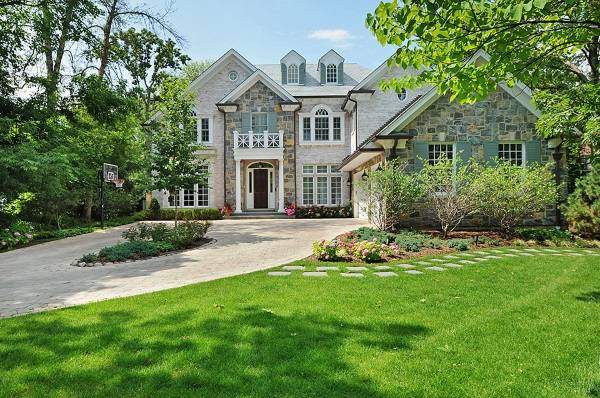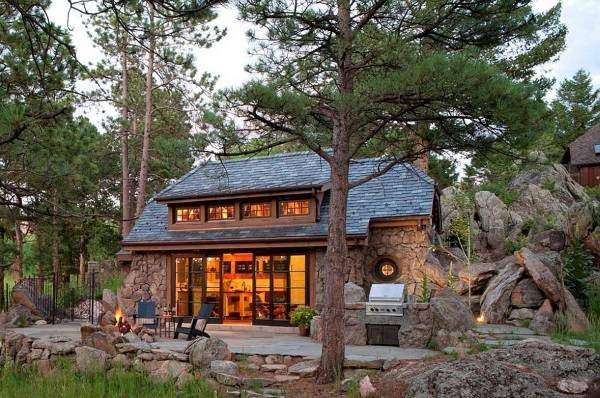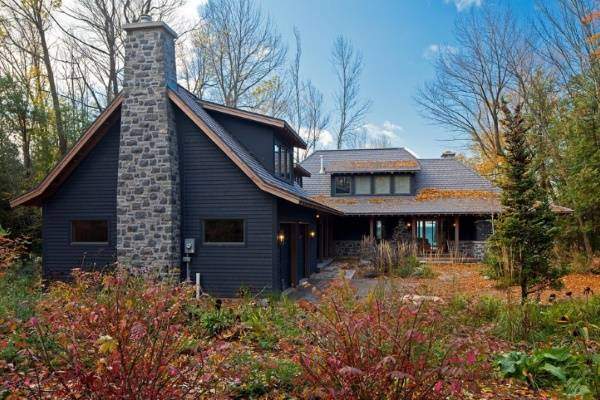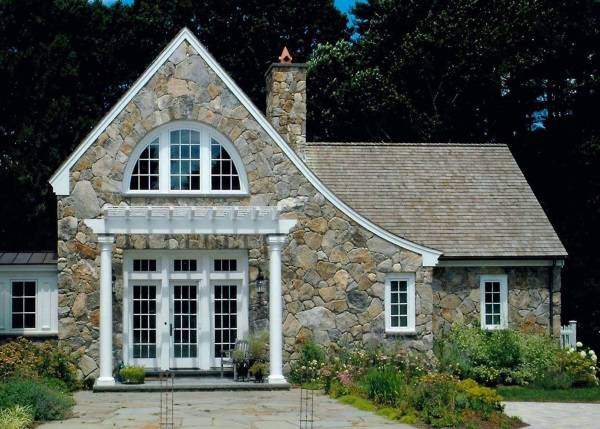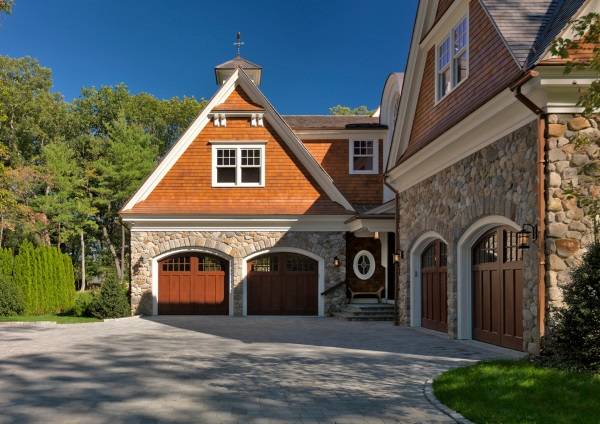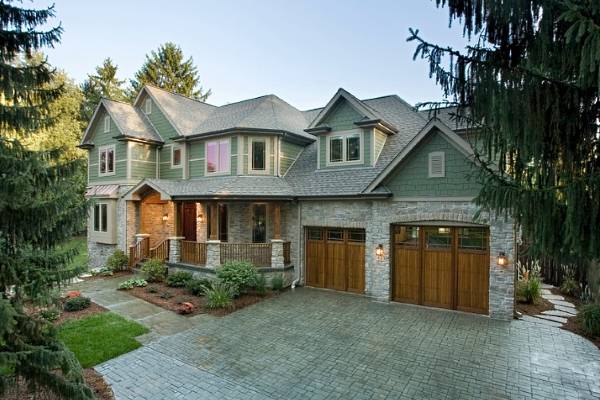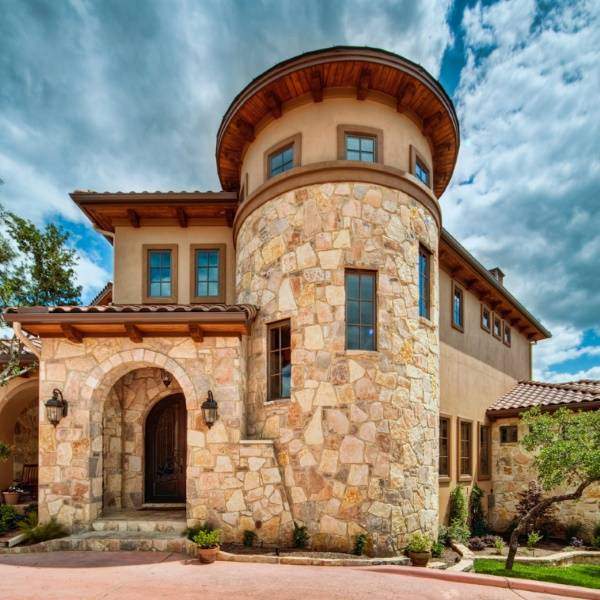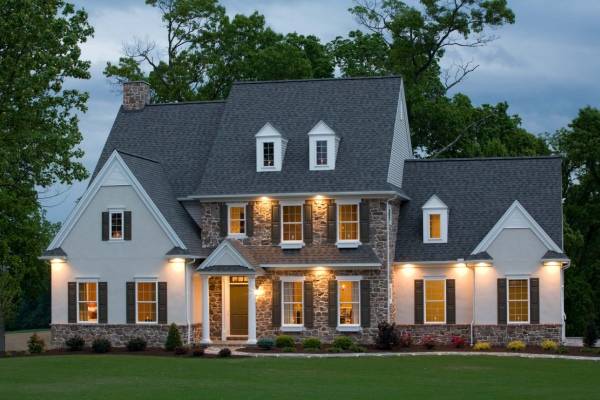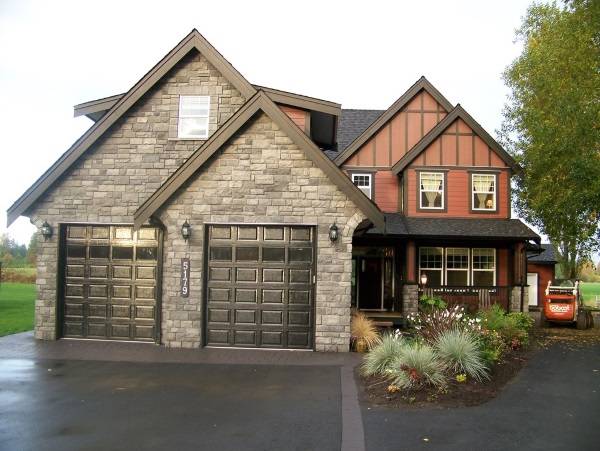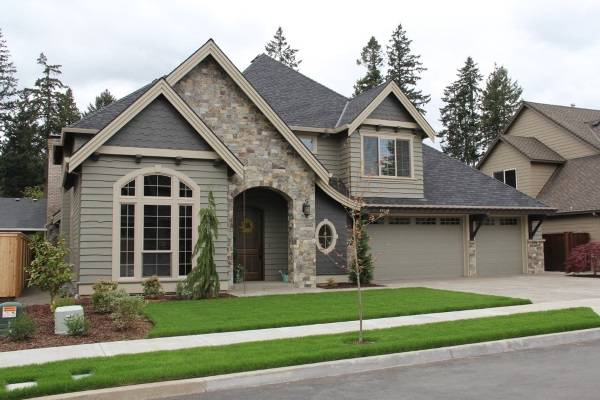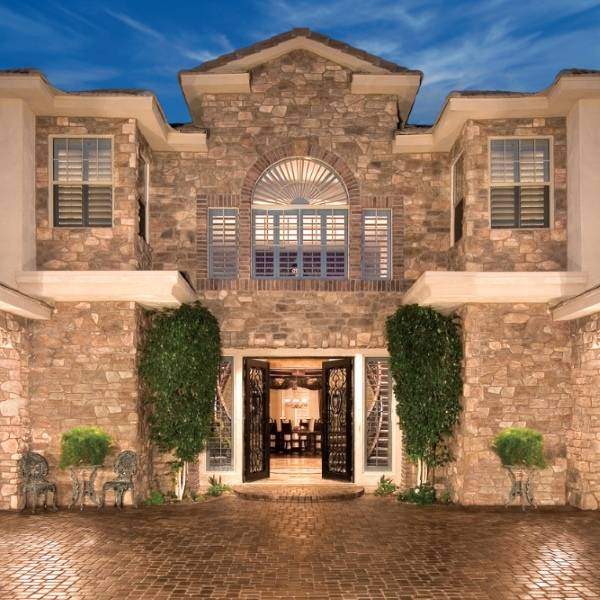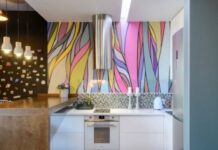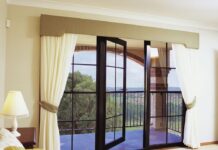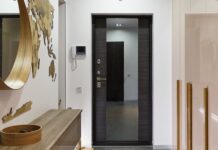The appearance of a private house from the outside speaks of the social status of the owner, his tastes, style and lifestyle. Therefore, when building or repairing the exterior, it is important to choose beautiful and high-quality finishing materials. The cladding of the façade with stone in this matter is unparalleled. It can cover only the basement, part of the façade or the entire private house, combine with plaster or wood – in any case, it will give the house a natural aesthetics and charm of antiquity.
What materials can be used to with stone, their pros and cons, as well as photos of stone exteriors of houses – read and see further in this article.
Choosing a facing stone for the façade
The façade made of natural stone is the most expensive, chic and difficult to install option. Natural rocks have been used in the construction and decoration of homes for hundreds of years, providing excellent durability and an authentic look. For modern façade cladding, natural stone is cut into slabs of various sizes and shapes. The front side of the tiles can have an exquisite relief, but the reverse side is always flat – for ease of attachment to the walls.
Artificial facing stone for the façade is a less expensive alternative to natural. In addition to saving money, it also simplifies the process of delivery and installation, since it is lighter than natural material. Note: the appearance of the façade and its durability do not suffer at all – artificial stone is created on the basis of cement using molds that allow you to copy the appearance and relief of real stone.
The process of laying natural and artificial stone consists of the following steps:
- Preparation of the surface of the walls (it is necessary to remove traces of the old finish, plaster, clean the irregularities and prime);
- Coating the reverse side of the stone with a special glue or cement-based mortar;
- The stone is applied to the wall, pressing it down so that excess solution protrudes;
- Removal of released surpluses;
- Filling the gaps between the stones with a mixture for jointing;
- Waiting for this mixture to dry completely;
- Treatment of the façade with a water-repellent solution, which will provide additional protection of the façade cladding from the effects of natural phenomena.
Agree, gluing each stone to the wall can be quite a tedious process. It will be much easier in this regard to make a façade under the stone with the help of siding.
Option number 1 is to use polyurethane foam panels. They are very light and conveniently connected to each other. Modern technologies give them such a “stone” look that it is possible to distinguish them from natural material only after touching. This type of finish can also serve you for many years, as it has good resistance to all weather conditions.
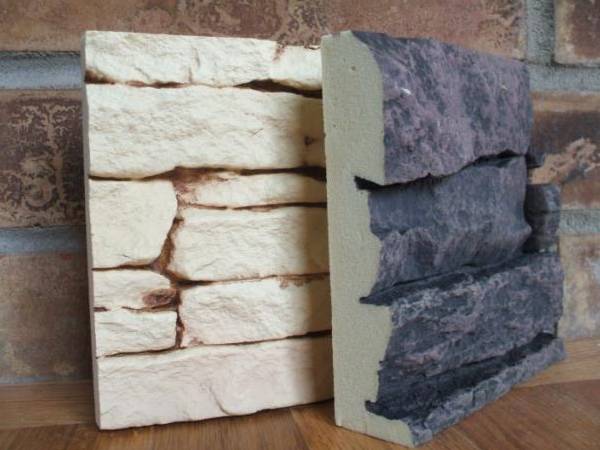 What does the installation of these panels look like – step by step in the photo:
What does the installation of these panels look like – step by step in the photo: Finished result:
Finished result: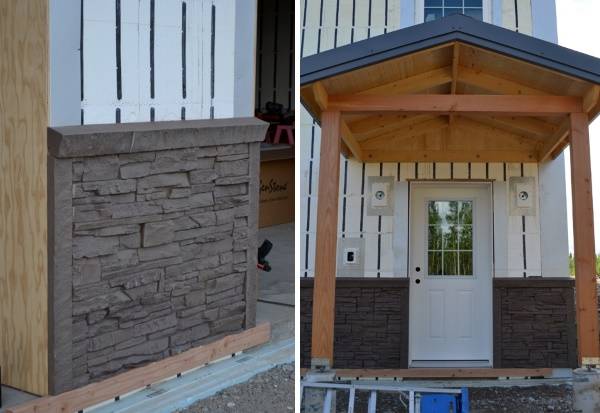
As you can see, this is a fairly convenient material for finishing corners, columns and other problem areas:
Natural stone façade panels combine the best of all of the above options. They are made of real stone veneer, but are installed on the walls as easily as polyurethane foam panels.
Whichever option you choose, stone façade cladding will give your home a sense of permanence and history. Let’s take a look at the photos of private houses with stone trim!
Facade cladding with natural stone (pros, cons, photos)
The positive aspects of façade cladding with natural stone can be safely attributed:
- Strength and durability of the structure;
- Environmental friendliness of the material used;
- Keeping cool in summer and warm in winter;
- Beautiful appearance;
- Easy to clean due to no need for polishing or painting. It is enough to periodically wash natural stone with water under pressure.
There are few disadvantages of a façade made of natural stone, but they can play a decisive role in making a decision:
- The large weight of the stone, which is why there are high requirements for the stability of the walls;
- High cost of materials and delivery;
- Time-consuming installation process.
Photos of private houses decorated with natural stone:
Facing the facades of private houses with artificial stone (photo)
Among the advantages of decorating houses with artificial stone:
- A wide range of designs from different manufacturers;
- Affordable prices;
- Relative lightness of the material;
- Exact similarity with natural stone.
At the same time, in comparison with it, artificial stone has the following disadvantages:
- Shorter service life (about 20-25 years of preservation of the initial appearance);
- Less resistance to moisture, temperature changes and sunlight.
We bring to your attention a few photos of houses with artificial stone cladding.
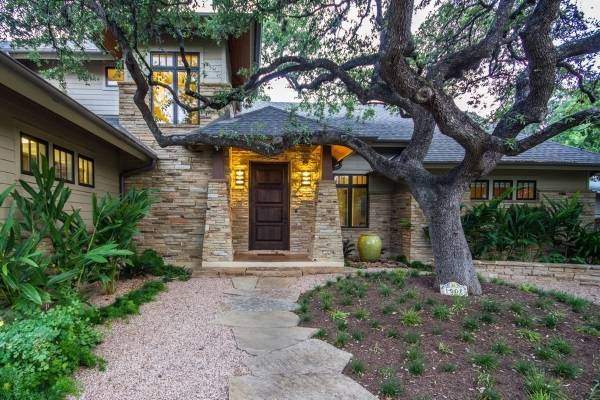

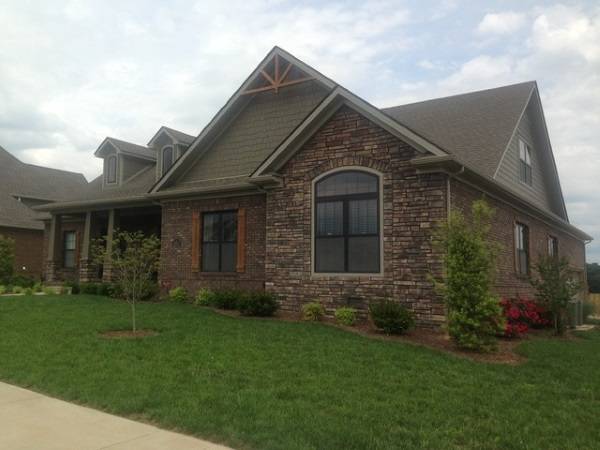 Также читайте: Красивые решетки на окна первого этажа
Также читайте: Красивые решетки на окна первого этажа